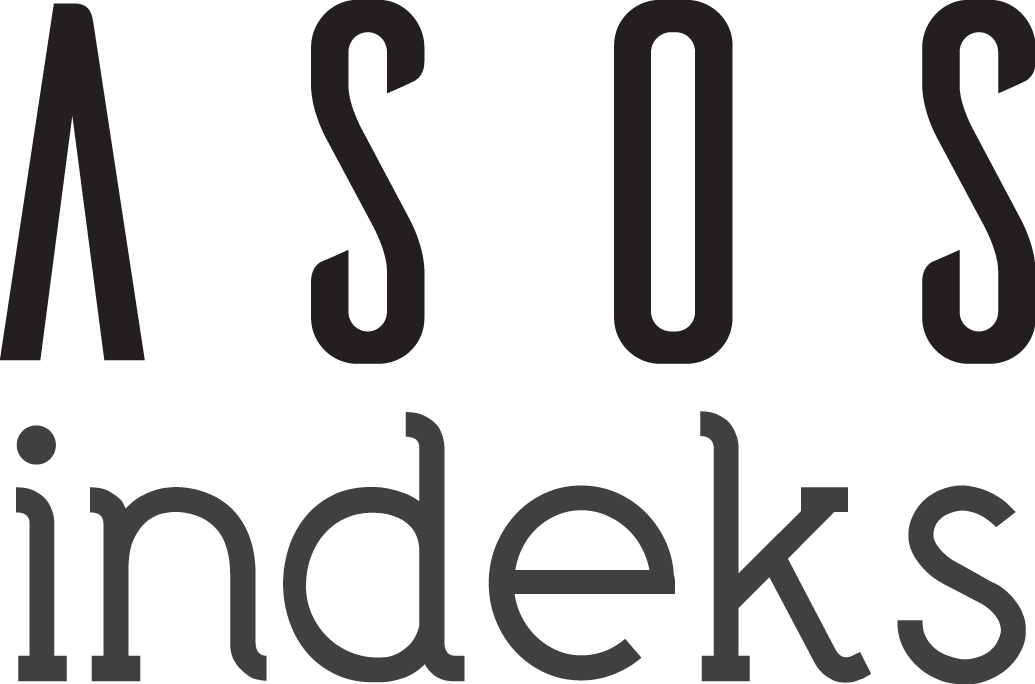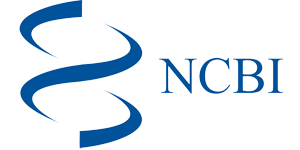Abstract
Amaç: Hashimoto tiroiditi (HT), dünyada en yaygın görülen otoimmün tiroid hastalığı ve hipotiroidizmin önde gelen nedenlerinden biridir. Bu bibliyometrik analiz, 2004-2023 yılları arasında yayımlanan 1.309 makaleyi değerlendirerek HT araştırma trendlerini, temel katkıda bulunanları ve ortaya çıkan temaları kapsamlı bir şekilde incelemeyi amaçlamaktadır. Çalışma, araştırma boşluklarını belirlemeyi, gelişmeleri vurgulamayı ve gelecekteki araştırma çabalarına rehberlik edecek bilgiler sunmayı hedeflemektedir.
Yöntemler: Veriler, "Hashimoto" anahtar kelimesi kullanılarak Web of Science Core Collection veri tabanından toplandı ve "Endocrinology Metabolism" kategorisiyle filtrelendi. Yayın trendlerini, anahtar kelime ilişkilerini ve iş birliği ağlarını görselleştirmek için VOSviewer kullanılarak bibliyometrik analiz gerçekleştirildi. Atıf metrikleri ve yayın çıktıları analiz edilerek etkili katkıda bulunanlar ve ortaya çıkan araştırma temaları belirlendi.
Bulgular: Analiz, yayın sayılarında istikrarlı bir artış olduğunu ve 2021 yılında zirve yaptığını ortaya koydu. Bu alanda önde gelen kuruluşlar ve Thyroid ile Journal of Clinical Endocrinology & Metabolism gibi dergiler dikkat çekici katkılarda bulunmuştur. Otoimmün mekanizmalar, tiroid disfonksiyonu ve bağırsak-tiroid ekseni gibi temalar baskın olarak öne çıkmıştır. Mikrobiyota odaklı müdahaleler ve kişiselleştirilmiş tıp gibi ortaya çıkan alanlar, HT araştırmalarında ilerleme için umut verici fırsatlar sunmaktadır. Ancak, bölgesel farklılıklar ve diyet müdahaleleri ile takviyeler dahil olmak üzere tedavi stratejilerindeki çelişkili bulgular, daha sağlam çalışmalara duyulan ihtiyacı vurgulamaktadır.
Sonuçlar: HT araştırmaları, patogenezinin ve klinik yönetiminin anlaşılmasında önemli ilerlemeler kaydetmiştir. Gelecekteki çabalar, ileri teknolojileri entegre eden, disiplinler arası ve büyük ölçekli çalışmalara odaklanmalıdır. Küresel iş birliklerini teşvik ederek ve yenilikçi yaklaşımları benimseyerek bilim camiası, hasta sonuçlarını iyileştirebilir ve HT araştırma alanını ileriye taşıyabilir.
References
- Sawin CT. History of Hashimoto’s disease: the heritage of Dr. Hakaru Hashimoto (1881-1934). Endocr J. 2002;49(4):399-403. doi:10.1507/endocrj.49.399
- Ahmed R, Al-Shaikh S, Akhtar M. Hashimoto thyroiditis: a century later. Adv Anat Pathol. 2012;19(3):181-126. doi:10.1097/PAP.0b013e 3182534868
- Zaletel K, Gaberscek S. Hashimoto's thyroiditis: from genes to the disease. Curr Genomics. 2011;12(8):576-588. doi:10.2174/138920211798120763
- Radetti G. Clinical aspects of Hashimoto's thyroiditis. Endocr Dev. 2014; 26:158-170. doi:10.1159/000363162
- Klubo-Gwiezdzinska J, Wartofsky L. Hashimoto thyroiditis: an evidence-based guide to etiology, diagnosis and treatment. Pol Arch Intern Med. 2022;132(3):16222. doi:10.20452/pamw.16222
- Akamizu T, Amino N. Hashimoto’s Thyroiditis. In: Endotext. MDText.com, Inc., South Dartmouth (MA); 2000.
- Caturegli P, De Remigis A, Rose NR. Hashimoto thyroiditis: clinical and diagnostic criteria. Autoimmun Rev. 2014;13(4-5):391-397. doi:10.1016/j.autrev.2014.01.007
- Kessler MM. Bibliographic coupling between scientific papers. Am Doc. 1963;14(1):10-25. doi:10.1002/asi.5090140103
- Boyack KW, Klavans R. Co-citation analysis, bibliographic coupling, and direct citation: which citation approach represents the research front most accurately? J Am Soc Inf Sci Technol. 2010;61(12):2389-2404. doi:10.1002/asi.21419
- Hu X, Chen Y, Shen Y, Tian R, Sheng Y, Que H. Global prevalence and epidemiological trends of Hashimoto’s thyroiditis in adults: a systematic review and meta-analysis. Front Public Health. 2022;10:1020709. doi:10. 3389/fpubh.2022.1020709
- Ragusa F, Fallahi P, Elia G, et al. Hashimoto’s thyroiditis: epidemiology, pathogenesis, clinic and therapy. Best Pract Res Clin Endocrinol Metab. 2019;33(6):101367. doi:10.1016/j.beem.2019.101367
- Pyzik A, Grywalska E, Matyjaszek-Matuszek B, Roliński J. Immune disorders in Hashimoto’s thyroiditis: what do we know so far? J Immunol Res. 2015;2015:979167. doi:10.1155/2015/979167
- Fernández-García V, González-Ramos S, Martín-Sanz P, Laparra JM, Boscá L. Beyond classic concepts in thyroid homeostasis: immune system and microbiota. Mol Cell Endocrinol. 2021;533:111333. doi:10. 1016/j.mce.2021.111333
- Liu J, Qin X, Lin B, et al. Analysis of gut microbiota diversity in Hashimoto’s thyroiditis patients. BMC Microbiol. 2022;22(1):318. doi:10. 1186/s12866-022-02739-z
- Lerner A, Aminov R, Matthias T. Intestinal dysbiotic transglutaminases are potential environmental drivers of systemic autoimmunogenesis. Front Microbiol. 2017;8(66.10):3389. doi:10.3389/fmicb.2017.00066
- McLeod DS, Cooper DS. The incidence and prevalence of thyroid autoimmunity. Endocrine. 2012;42(2):252-265. doi:10.1007/s12020-012-9703-2
- Pirola I, Rotondi M, Cristiano A, et al. Selenium supplementation in patients with subclinical hypothyroidism affected by autoimmune thyroiditis: results of the SETI study. Endocrinol Diabetes Nutr. 2020; 67(1):28-35. doi:10.1016/j.endinu.2019.03.018
- Shin DY, Kim KJ, Kim D, Hwang S, Lee EJ. Low serum vitamin D is associated with anti-thyroid peroxidase antibody in autoimmune thyroiditis. Yonsei Med J. 2014;55(2):476-481. doi:10.3349/ymj.2014.55.2. 476
- Nodehi M, Ajami A, Izad M, et al. Effects of vitamin D supplements on frequency of CD4+ T-cell subsets in women with Hashimoto’s thyroiditis: a double-blind placebo-controlled study. Eur J Clin Nutr. 2019;73(9):1236-1243. doi:10.1038/s41430-019-0395-z
Abstract
Aims: Hashimoto's thyroiditis (HT) is the most common autoimmune thyroid disorder and a leading cause of hypothyroidism worldwide. This bibliometric analysis aims to provide a comprehensive overview of HT research trends, key contributors, and emerging themes by evaluating 1.309 articles published between 2004 and 2023. The study seeks to identify gaps, highlight advancements, and offer insights to guide future research efforts.
Methods: Data were collected from the Web of Science Core Collection database using the keyword "Hashimoto" and filtered by the "endocrinology metabolism" category. Bibliometric analysis was conducted using VOSviewer to visualize publication trends, keyword relationships, and collaboration networks. Citation metrics and publication outputs were analyzed to identify influential contributors and emerging research themes.
Results: The analysis revealed a steady growth in publications, peaking in 2021, with notable contributions from leading institutions and journals such as thyroid and Journal of Clinical Endocrinology & Metabolism. Dominant themes included autoimmune mechanisms, thyroid dysfunction, and the gut-thyroid axis. Emerging areas, such as microbiota-targeted interventions and personalized medicine, offer promising avenues for advancing HT research. However, regional disparities and conflicting findings in treatment strategies, including dietary interventions and supplementation, underscore the need for more robust studies.
Conclusion: HT research has achieved significant progress in understanding its pathogenesis and clinical management. Future efforts should focus on multidisciplinary, large-scale studies that integrate advanced technologies and address regional research gaps. By fostering global collaborations and embracing innovative approaches, the scientific community can improve patient outcomes and advance the field of HT research.
Keywords
Hashimoto’s thyroiditis autoimmune thyroid disease bibliometric analysis thyroid dysfunction
Ethical Statement
Since this research is a bibliometric study, it did not require ethics committee approval. It is conducted with the institution's permission.
Thanks
I would like to thank Gizem Çoban for her support during the analysis and data visualization stages.
References
- Sawin CT. History of Hashimoto’s disease: the heritage of Dr. Hakaru Hashimoto (1881-1934). Endocr J. 2002;49(4):399-403. doi:10.1507/endocrj.49.399
- Ahmed R, Al-Shaikh S, Akhtar M. Hashimoto thyroiditis: a century later. Adv Anat Pathol. 2012;19(3):181-126. doi:10.1097/PAP.0b013e 3182534868
- Zaletel K, Gaberscek S. Hashimoto's thyroiditis: from genes to the disease. Curr Genomics. 2011;12(8):576-588. doi:10.2174/138920211798120763
- Radetti G. Clinical aspects of Hashimoto's thyroiditis. Endocr Dev. 2014; 26:158-170. doi:10.1159/000363162
- Klubo-Gwiezdzinska J, Wartofsky L. Hashimoto thyroiditis: an evidence-based guide to etiology, diagnosis and treatment. Pol Arch Intern Med. 2022;132(3):16222. doi:10.20452/pamw.16222
- Akamizu T, Amino N. Hashimoto’s Thyroiditis. In: Endotext. MDText.com, Inc., South Dartmouth (MA); 2000.
- Caturegli P, De Remigis A, Rose NR. Hashimoto thyroiditis: clinical and diagnostic criteria. Autoimmun Rev. 2014;13(4-5):391-397. doi:10.1016/j.autrev.2014.01.007
- Kessler MM. Bibliographic coupling between scientific papers. Am Doc. 1963;14(1):10-25. doi:10.1002/asi.5090140103
- Boyack KW, Klavans R. Co-citation analysis, bibliographic coupling, and direct citation: which citation approach represents the research front most accurately? J Am Soc Inf Sci Technol. 2010;61(12):2389-2404. doi:10.1002/asi.21419
- Hu X, Chen Y, Shen Y, Tian R, Sheng Y, Que H. Global prevalence and epidemiological trends of Hashimoto’s thyroiditis in adults: a systematic review and meta-analysis. Front Public Health. 2022;10:1020709. doi:10. 3389/fpubh.2022.1020709
- Ragusa F, Fallahi P, Elia G, et al. Hashimoto’s thyroiditis: epidemiology, pathogenesis, clinic and therapy. Best Pract Res Clin Endocrinol Metab. 2019;33(6):101367. doi:10.1016/j.beem.2019.101367
- Pyzik A, Grywalska E, Matyjaszek-Matuszek B, Roliński J. Immune disorders in Hashimoto’s thyroiditis: what do we know so far? J Immunol Res. 2015;2015:979167. doi:10.1155/2015/979167
- Fernández-García V, González-Ramos S, Martín-Sanz P, Laparra JM, Boscá L. Beyond classic concepts in thyroid homeostasis: immune system and microbiota. Mol Cell Endocrinol. 2021;533:111333. doi:10. 1016/j.mce.2021.111333
- Liu J, Qin X, Lin B, et al. Analysis of gut microbiota diversity in Hashimoto’s thyroiditis patients. BMC Microbiol. 2022;22(1):318. doi:10. 1186/s12866-022-02739-z
- Lerner A, Aminov R, Matthias T. Intestinal dysbiotic transglutaminases are potential environmental drivers of systemic autoimmunogenesis. Front Microbiol. 2017;8(66.10):3389. doi:10.3389/fmicb.2017.00066
- McLeod DS, Cooper DS. The incidence and prevalence of thyroid autoimmunity. Endocrine. 2012;42(2):252-265. doi:10.1007/s12020-012-9703-2
- Pirola I, Rotondi M, Cristiano A, et al. Selenium supplementation in patients with subclinical hypothyroidism affected by autoimmune thyroiditis: results of the SETI study. Endocrinol Diabetes Nutr. 2020; 67(1):28-35. doi:10.1016/j.endinu.2019.03.018
- Shin DY, Kim KJ, Kim D, Hwang S, Lee EJ. Low serum vitamin D is associated with anti-thyroid peroxidase antibody in autoimmune thyroiditis. Yonsei Med J. 2014;55(2):476-481. doi:10.3349/ymj.2014.55.2. 476
- Nodehi M, Ajami A, Izad M, et al. Effects of vitamin D supplements on frequency of CD4+ T-cell subsets in women with Hashimoto’s thyroiditis: a double-blind placebo-controlled study. Eur J Clin Nutr. 2019;73(9):1236-1243. doi:10.1038/s41430-019-0395-z
Details
| Primary Language | English |
|---|---|
| Subjects | Endocrinology |
| Journal Section | Research Articles [en] Araştırma Makaleleri [tr] |
| Authors | |
| Publication Date | February 14, 2025 |
| Submission Date | January 4, 2025 |
| Acceptance Date | February 9, 2025 |
| Published in Issue | Year 2025 Volume: 6 Issue: 1 |
TR DİZİN ULAKBİM and International Indexes (1d)
Interuniversity Board (UAK) Equivalency: Article published in Ulakbim TR Index journal [10 POINTS], and Article published in other (excuding 1a, b, c) international indexed journal (1d) [5 POINTS]
|
|
|
Our journal is in TR-Dizin, DRJI (Directory of Research Journals Indexing, General Impact Factor, Google Scholar, Researchgate, CrossRef (DOI), ROAD, ASOS Index, Turk Medline Index, Eurasian Scientific Journal Index (ESJI), and Turkiye Citation Index.
EBSCO, DOAJ, OAJI and ProQuest Index are in process of evaluation.
Journal articles are evaluated as "Double-Blind Peer Review".










